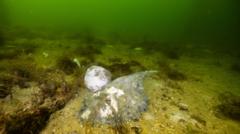Authorities in South Australia are grappling with a toxic algal bloom that has spread dramatically since March, affecting marine ecosystems and degrading local economies. Premier Peter Malinauskas has labeled the bloom a "natural disaster," stating that it warrants recognition as such, despite the federal government's hesitance to classify it under disaster laws typically reserved for cyclones and floods.
The algal bloom has caused the death of over 400 marine species and now spans an area twice the size of the Australian Capital Territory. As local fishermen express despair over financial losses, the fishing industry reports that many members have experienced no income for months.
Climate change-related factors—such as marine heatwaves, ocean warming, and nutrient pollution—have fueled these harmful algae, which are a naturally occurring phenomenon. Criticism has emerged around the federal government's handling of the situation, with Greens Senator Sarah Hanson-Young suggesting that a response would be swifter if the crisis affected more affluent coastal areas.
In response to the devastation, the state government will match a recently announced federal assistance package of A$14 million. This funding aims to bolster research efforts, promote cleanup initiatives, and support affected industries. Environmental organizations are alarmed at the fallout, describing the bloom's impact as deeply concerning for marine life, with one advocate likening the scene along the coastline to a "horror movie for fish." The extent of the crisis highlights the urgent need for enhanced environmental policies and climate change mitigation in Australia.






















